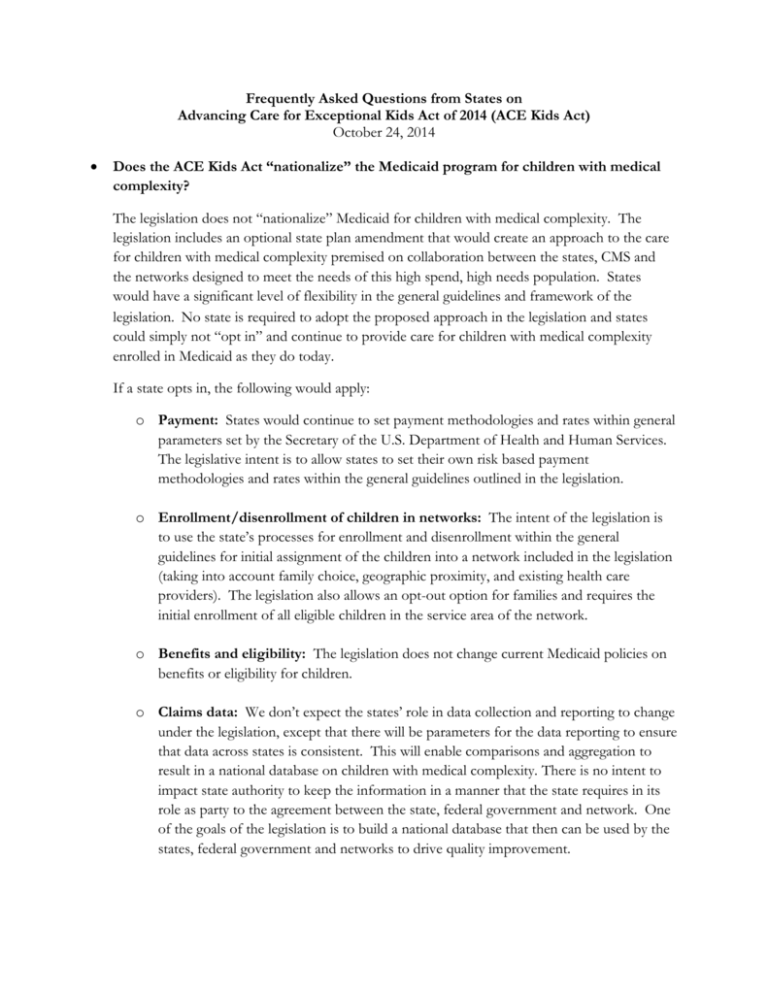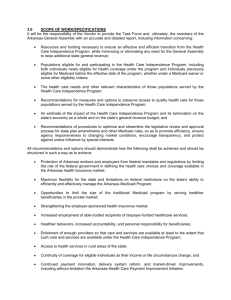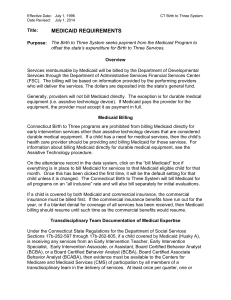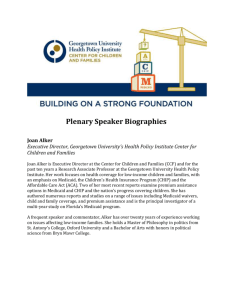ACE Frequently Asked Questions
advertisement

Frequently Asked Questions from States on Advancing Care for Exceptional Kids Act of 2014 (ACE Kids Act) October 24, 2014 Does the ACE Kids Act “nationalize” the Medicaid program for children with medical complexity? The legislation does not “nationalize” Medicaid for children with medical complexity. The legislation includes an optional state plan amendment that would create an approach to the care for children with medical complexity premised on collaboration between the states, CMS and the networks designed to meet the needs of this high spend, high needs population. States would have a significant level of flexibility in the general guidelines and framework of the legislation. No state is required to adopt the proposed approach in the legislation and states could simply not “opt in” and continue to provide care for children with medical complexity enrolled in Medicaid as they do today. If a state opts in, the following would apply: o Payment: States would continue to set payment methodologies and rates within general parameters set by the Secretary of the U.S. Department of Health and Human Services. The legislative intent is to allow states to set their own risk based payment methodologies and rates within the general guidelines outlined in the legislation. o Enrollment/disenrollment of children in networks: The intent of the legislation is to use the state’s processes for enrollment and disenrollment within the general guidelines for initial assignment of the children into a network included in the legislation (taking into account family choice, geographic proximity, and existing health care providers). The legislation also allows an opt-out option for families and requires the initial enrollment of all eligible children in the service area of the network. o Benefits and eligibility: The legislation does not change current Medicaid policies on benefits or eligibility for children. o Claims data: We don’t expect the states’ role in data collection and reporting to change under the legislation, except that there will be parameters for the data reporting to ensure that data across states is consistent. This will enable comparisons and aggregation to result in a national database on children with medical complexity. There is no intent to impact state authority to keep the information in a manner that the state requires in its role as party to the agreement between the state, federal government and network. One of the goals of the legislation is to build a national database that then can be used by the states, federal government and networks to drive quality improvement. o Designation of the networks: The legislation does provide for a federal role in designating networks but only if they meet the substantive requirements in the legislation and participate in a three party (state-federal-network) agreement. The goal from the children’s hospitals perspective is to begin to create nationally designated network definitions in statute to best support the highest quality of care for children with medical complexity across the country. o Determination of network service areas: The service areas are designated via a three party agreement (states, federal government and networks). A network serving medically complex children requires a “critical mass” of providers --- specialists, primary care providers, hospitals and other service providers tied together with a necessary communications infrastructure. Networks will need a minimum number of patients in order to be assembled and maintained. The bill is not attempting to create monopolies, but rather to ensure that networks are sufficiently sized to deliver high quality, efficient care. We expect in some areas there will be more than one network established. Accordingly, the proposal attempts to strike a balance between providing quality and specialized nationally designated network services to the critically ill pediatric Medicaid population in the country, while assuring that there is the opportunity for competition to provide services. o Development of network adequacy, quality measures and other standards: Under the legislation, the federal government working closely with the networks and states would drive the development of standardized quality measures, care coordination metrics and network adequacy standards. Due to the small number of children in this category, it is necessary to look across states to best support quality improvements. This does not mean states could not have a significant role in this process, just that the federal government would lead this effort since they will have the aggregate data across states and the national perspective, which is critical to improving care for this small population. Could you explain how children are enrolled in the program and why they have to wait 90 days to opt out? Children with medical complexity in areas where there are networks would be assigned to a network by the state. In the first 90 days, the child and family would learn about the network, the benefits of being part of the network and outline a care plan working with the care team. The 90 days is necessary to allow the network and family time for this education, processing of information and care plan development to take place. After the 90 days, the family could decide that they want to return to the traditional Medicaid program or enroll in another network if one is available. Why are children required to travel 30 miles to their assigned medical home? The language on the 30 miles in the legislation is designed to protect children and families from being enrolled in networks that only have medical home capacity a far distance (ie., more than 30 miles) from the family’s home. For example, this would not be operationalized to require a child in a dense urban area with ready access to a medical home to be assigned to a medical home 30 miles away. Since the state would be implementing the assignment, they would ensure the proper implementation of this provision. How would ACE Kids work in a state where children with medical complexity are enrolled in Medicaid managed care? The framework outlined in the bill could be operationalized in a state with FFS or Medicaid managed care. In an opt in state where this group of children are already enrolled in Medicaid managed care, the health plans would subcontract with the networks to provide all services for children with medical complexity. The health plan and the network in collaboration with the state would work out the financial arrangements and responsibilities for the administrative aspects of this agreement. The network would be responsible for providing and coordinating care for the children enrolled with medical complexity. Incorporating these networks into health plan capacity would ensure that children with medical complexity have a nationally designated network tailored to their unique health care and care coordination needs. The network would also receive a risk based payment which would result in the alignment of payment with quality outcomes and result in reduced costs under the program.











